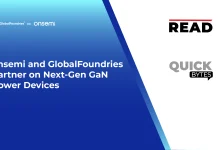Scientific Systems, an industry leader in developing trusted AI for defense applications, announced a new contract with the United States Army’s Humanitarian Demining Research and Development (HD R&D) Program to upgrade its revolutionary Buried Object Reporting and Identification System (BORIS). BORIS is an advanced software tool for non-military humanitarian clearance of unexploded ordnance (UXO) and range remediation that provides multi-modality, platform-agnostic data processing and visualization for unexploded ordnance (UXO) detection and localization. BORIS was developed under contracts from the U.S. Army Combat Capabilities Development Command Humanitarian Demining Research and Development Program.
“In the wake of conflicts, the remnants of war including undetonated bombs and other explosives have triggered humanitarian crises by blocking access to aid, preventing families from returning home and killing innocent civilians. Clearing former battlefields of explosives has long been dangerous and painstaking work, but game changing new technology is helping to make this process more effective, efficient, and safer. For over a decade, our BORIS software has played its part in this effort by providing governments and humanitarian organizations with a powerful tool to remove unexploded ordnance and help people across the globe rebuild their lives after the battle has ended.” said Kunal Mehra, President of Scientific Systems. “We are proud to continue our work with the United States Army to upgrade BORIS to help address a new generation of unexploded threats on the battlefield and in the aftermath of conflicts.”
BORIS has been in field use for more than ten years by various non-military humanitarian mine action organizations in countries including Cambodia, Vietnam, Afghanistan, Iraq, Kosovo, and Ukraine. Additionally, BORIS has been used during range remediation in areas where munitions, explosives, and other ordnance were developed, tested, and evaluated. In conjunction with different detector platforms, BORIS has successfully located thousands of pieces of unexploded ordnance covering millions of square meters of land.
BORIS has a streamlined workflow that enables operators to load data from various sensor platforms and obtain “dig sheets” of prioritized lists of UXO locations for UXO clearing. The BORIS integrated graphical user interface (GUI) facilitates interfacing with different sensor platforms and is designed to support the needs of operators and field supervisors of different skill levels. The BORIS GUI allows users to visualize raw and processed sensor data for quality inspection. Furthermore, experienced users can choose to explore the underlying data processing and customize the parameters for specific field requirements or operational environments. The internal BORIS data processing algorithm provides the automatic target recognition (ATR) capability. It is capable of fusing data from multiple sensor modalities and identifying distinct patterns of UXO signal. The built-in ATR improves detection sensitivity to UXOs while mitigating false alarms, accelerating the speed of area clearing and allowing lightly trained operators to use the system effectively.
SOURCE: PRNewswire




